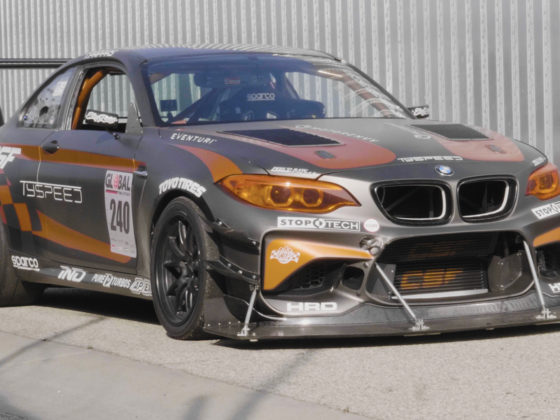
Of course, proper head sealing is critical with any engine. We used JE Pistons Pro-Seal MLS Head Gasket, part number HN1024-033. The Pro-Seal gasket is made of 3 layers of polymer-coated stainless, embossed for more sealing around the cylinders and water passages. Importantly there is also an additional stopper layer around each cylinder for extra combustion seal clamping force. This makes a huge difference in sealing reliability with high compression and forced induction engines.

For an Intake Manifold to give better flow with bigger and shorter runners for more high rpm power, and to give our motor a sleeper look, we used the tried and true OEM Honda RBC manifold. The RBC intake manifold was originally found on the Euro Accord Type-R but was also standard on the 2006+ USDM Civic Si. The RBC manifold gives a good bump in top-end power without much loss on the bottom end. To fit on the A2 head, you need to cut the water neck off the front of the manifold and to drill a hole in the intake manifold gasket for water to flow through near the 2nd intake port.

For a throttle body, we opted to use K-Tuned’s 80mm throttle body, part number KTD-TB8. This is much bigger than the stock 62mm throttle.

The throttle body has a dual bolt pattern for PRB and RBC manifolds. It has many features to make it more adaptable for different swaps, such as a highly adjustable throttle drum. All OEM sensors such as the TPS, MAP, EVAP, and IAVC fit right on for an easy install.

To ease the transition from the throttle body to the manifold we used this PRL spacer, part number PRL-HC9-IM-STK. This enable us to port the spacer and intake manifold to have a super smooth transition.




10 comments
I don’t understand why that collector necks down before the V-band, the “reverse cone”. I don’t get how it would not induce a back pulse, granted turbulent flow physics is not my domain.
At what point in a build would you consider going to individual lambda versus the one? Would there be any gain without ITBs?
Okay well I went studying a bit on reverse cones and it seems they do generate a backpulse but in a certain RPM range that backpulse turns into a negative pressure backpulse (because of the megaphone shape) that helps suck in fresh air during valve overlap. The bad side seems to be that it has a negative impact on low RPM torque and leaves a torque dead zone during the transition into that negative pressure backpulse. That dead zone seems to be minimised by 4-2-1 headers since the second pulse mitigates the first one during that transition period… This just confirms that turbulent air is not my domain, I’ll let wizards deal with it.
In my testing, the reverse cone reduces power drop off after the peak as I said in the article.
That would make sense, the pulse sucks air in during valve overlap when your piston is near TDC where it’s not doing anything, so that pulse is virtually lengthening your intake duration.
The article I read was about reverse cone exhausts on MotoGP bikes with high RPM NA 4 where they are used to broaden the usable RPM range.
Good thing ASP only doesn’t do BP headers, I need to spend on a new winter car instead.
I don’t like complications and additional stuff on cars. Maybe for dyno headers, I might do that on a well-funded engine development program. Once you start paying for stuff out of your own pocket, you idea on how you ought to do things changes.
Curious to see how much timing you will be able to run on 91
*their magic
From previous experience with this engine, in the low 20’s.
Wow, that’s it eh? I guess with the cam timing and (maybe) small combustion chamber volume of these engines you do not need to run a significant amount of advance? I have a lot yet to learn on K tuning.
small bore too.
I have a good price on a 2012 SI, but it looks like the Z block is way less popular than the A for tuning, is it just a production quantity thing or is there some downside to the Zs that I don’t know about, I could just drop on a 20A head and keep my stock 11:1 bottom end?
Is anything specially bad on the FG that would need to be addressed for autocross? Like the EP steering/suspension geometry problems?